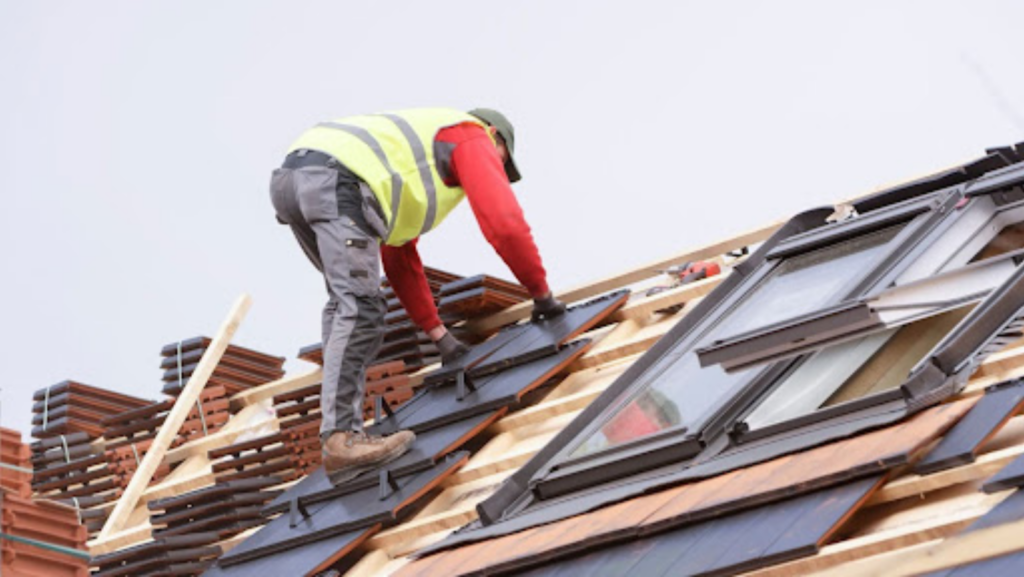Roofing issues can sneak up on us, often going unnoticed until they’ve caused significant damage. I’m here to help you stay a step ahead. This article will equip you with the knowledge to identify and tackle common roofing problems before they escalate into costly repairs.
From missing shingles to leakage, we’ll explore some typical roofing troubles and provide practical solutions. You’ll learn how to spot early warning signs and the best ways to fix them. Let’s ensure your roof remains in top-notch condition, shielding your home from the elements, and saving you from unexpected expenses.
Identifying Common Roofing Issues
Understanding common roofing issues plays an essential role in maintaining a robust, sturdy roof. In this section, I’ll help you become more adept at identifying signs of wear, spotting leaks early, and dealing with shingle damage.
Signs of Wear and Tear
Typically, roofs experience certain stages of wear and tear over time due to exposure to the elements. Noticeable items, such as – lost granules, faded color, and curled shingles, are visible symptoms. For instance, asphalt shingles tend to lose their granules, seen as tiny, coarse sand-like particles in your gutter or downspout. Faded color might resonate with an old roof that’s been under the brunt of sun, wind, rain, and snow for years. Curled shingle corners or cupped shingle tabs indicate your roofing material is aging or has been exposed to excessive heat.
Spotting Leaks Early
Leaks are notorious for their elusive nature. They’re often hard to find, and as a result, they may cause substantial damage if not addressed promptly. Attentiveness to factors, such as water stains on interior walls, ceilings, and attics, help diagnose a leak. For instance, water stains on the ceiling might suggest a leak directly above, while musty, moldy odors in the attic often mean moisture is present. Don’t overlook a sudden increase in utility bills. It’s another telltale sign of a possible leak, as water intrusion can compromise insulation, reducing its efficiency.
Dealing with Shingle Damage
Shingles, often, bear the brunt of nature’s wrath and may exhibit signs of damage. Identifiers like missing shingles, cracks, and blisters are common signs of shingle damage.
For example, missing shingles leave your roof deck exposed to the sun and rain, increasing the chances of a leak. Cracks might appear small but often get worse under fluctuating weather conditions. Blisters, on the other hand, are raised areas where moisture has gotten trapped in the shingle or between two shingles. A Roofing Company in Springfield or other professional services can provide assistance in such cases for proper repair and replacement.
Preventative Measures for Roof Maintenance
Keeping a roof over one’s head, in the literal sense, requires regular maintenance. Integrating a simple routine to prevent significant problems comes down to three main areas: routine inspections, systematic cleaning, and treatment for mildew and mold.
Regular Inspection Tips
Regular inspections, ideally twice a year, keep a roof in optimal condition. These check-ups bring minor issues to light before they escalate into major problems – a practice that may save thousands of dollars over time. During inspections, attention goes to areas susceptible to leaks, particularly around chimneys, vents, and skylights. Eyeing for loose, damaged, or missing shingles can protect a roof deck from exposure and leaks. Also, check for granules in gutters—too many could indicate the end of your shingle’s life cycle. Engaging services of a professional roofing company, such as Roofing Company Springfield, ensures thorough and accurate inspections.
Cleaning Your Roof
A well-maintained roof isn’t merely free from physical damage; it’s clean. Over the seasons, roofs accumulate debris, including leaves, twigs, and dirt. Left unchecked, these can trap moisture, rot wooden parts, and cause substantial damage.
Therefore, a systematic cleaning schedule is a priority. Gently remove debris using a roof rake, paying special attention to valley areas where leaves tend to gather. Additionally, pressure washing works miracles on tough stains, dirt, and moss. However, never aim the spray upward as it may drive water under the shingles, leading to leaks.
Treating Mildew and Mold
Mildew and mold present grave threats to roofs, particularly those in humid climates. These entities promote rot and, if left untreated, can degrade roofing materials severely. Keep an eye out for the telltale signs—dark stains and streaks. If it’s spotted, don’t delay the treatment. Various over-the-counter products are efficient, but sometimes the best solution is a bleach mist spray followed by a thorough rinse. Remember, safety first. Working at height brings inherent risks, so it’s wise to consider professionals for serious cases. Companies like Roofing Company Springfield are well-equipped and experienced in safely treating mildew and mold infestations.




More Stories
Common Household Issues That Need an Emergency Electrician
The Benefits of Regular Plumbing Inspections for Homeowners
Stylish and Efficient: Choosing the Right Design for Your Single Panel Radiator